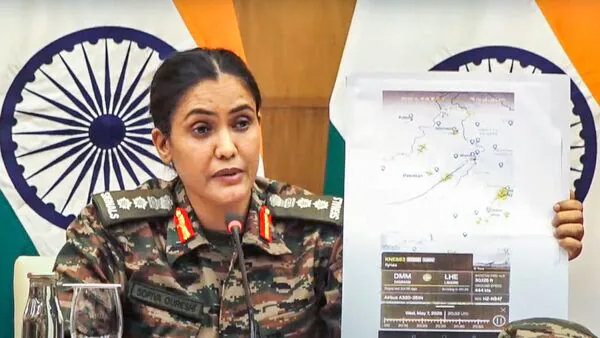 Early Times Report Early Times Report
Jammu, May 9: Pakistan launched a large-scale attack involving 300 to 400 Turkish-made drones targeting Indian military installations across 36 towns and cities in Jammu and Kashmir, Rajasthan, Punjab, and Gujarat, Indian Air Force Colonel Sofiya Qureshi announced in a Friday evening press briefing. The late-night assault on May 7, spanning from Srinagar to Jaisalmer, Pathankot to Kutch, and even the Siachen Glacier base camp in Ladakh, marked a significant escalation and a blatant violation of the ceasefire agreement along the Line of Control (LoC).
Col. Qureshi reported that India’s air defence systems neutralised every drone, with 50 shot down by air defence guns and 20 disabled through radio frequency jamming. Most drones were unarmed, fitted with cameras likely relaying footage to Pakistani ground stations, suggesting a test of India’s defences. However, Pakistan’s aggression extended beyond drones, with continued small arms fire and artillery shelling across the LoC, resulting in 16 Indian deaths, including one soldier.
India’s response was swift and decisive. The Indian military inflicted “heavy damage” on Pakistani forces, disabling their air defence networks and countering missile barrages. Debris from downed drones and missiles, including fragments found in Punjab’s Amritsar, is being analysed to further link Pakistan’s military or deep state to terrorist activities against India.
The attack followed India’s Operation Sindoor, a precision strike hours earlier that destroyed nine terrorist camps in Pakistan and Pakistan-occupied Kashmir (PoK) without targeting Pakistani military installations. Pakistan retaliated with missile strikes, all intercepted by India’s integrated Counter-Unmanned Aerial System (C-UAS). A second wave of attacks was repelled using the indigenously developed Akash missile defence system, comparable to Israel’s Iron Dome.
Government sources hailed the efficiency of India’s air defences, stating, “India is not just capable of defending its skies—it now controls them.” The seamless integration of advanced systems underscored India’s aerial dominance, cementing its reputation as a formidable regional power. |
